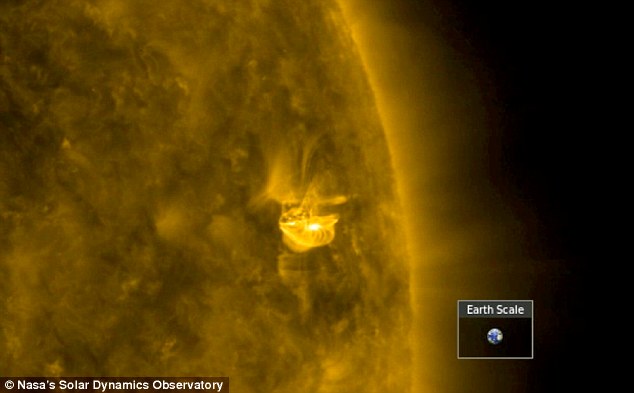Scientists have revealed footage of the incredible moment bursts of plasma erupted from the sun earlier this month.
After the flares- which are larger than the size of Earth – the magnetic field lines appeared as beautiful well-defined coils.
Solar flares are the most energetic events in our solar system and can have a major impact on Earth.
With these high-detail observations, researchers can investigate the conditions in which these events form which could help scientists create more accurate ways to predict them in the future.
The footage was captured by Nasa’s Solar Dynamics Observatory which was launched in 2010 with the aim of observing the sun.
The active region erupted twice in 18 hours on 2 March, according to Nasa.
‘After each burst, one can see the magnetic fields lines, which appear as bright coils, spiralling around the region’, the space agency said.
They are reorganising the disrupted magnetic field, experts say.
‘The quick second when the screen goes black was caused by the Earth passing between the spacecraft and the sun’.



In September, scientists captured a burst of radiation that was the largest ever seen for 12 years.
Using the Swedish Solar Telescope in La Palma, the researchers were able to gather ‘unheard of’ views of the powerful event in the opening moments of its life.
The flare was one of three events known as X-category flares that took place over the course of 48 hours, with each reaching energies comparable to one billion hydrogen bombs.
‘It’s very unusual to observe the opening minutes of a flare’s life,’ said Dr Chris Nelson from the Solar Physics and Space Plasma Research Centre at the time.
‘We can only observe about 1/250th of the solar surface at any one time using the Swedish Solar Telescope, so to be in the right place at the right time requires a lot of luck.
‘To observe the rise phases of three X-classes over two days is just unheard of.’
According to the team, an X-class flare can form and reach its peak intensity in roughly five minutes, making it difficult to catch the opening moments when these events emerge.
But in this case, the researchers were able to do so for three.
One of these flares was the largest seen in over 12 years, and the 8th largest in modern records, which began in 1996.
‘Solar flares are the most energetic events in our solar system and can have a major impact on earth,’ said Professor Mihalis Mathioudakis, who led the project at Queen’s University Belfast.
‘The dedication and perseverance of our early career scientists who planned and executed these observations led to the capture of this unique event and have helped to advance our knowledge in this area.’












